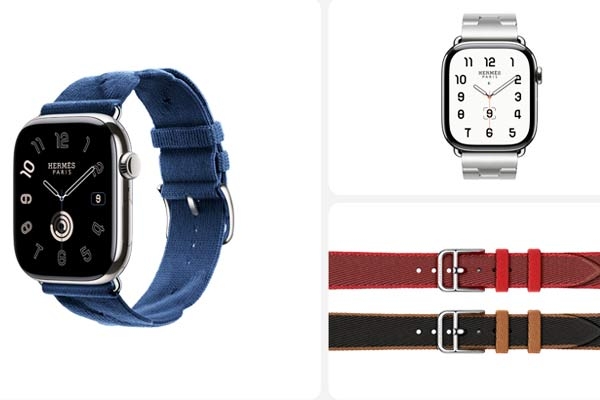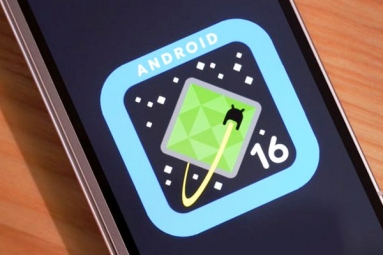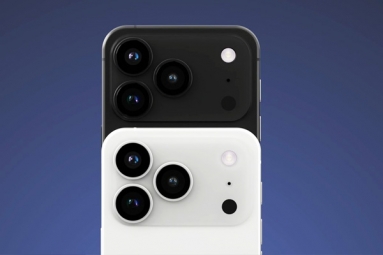
(Image source from: x.com/theapplehub)
The entire time I was testing the Apple Watch Series 10, the song “Harder, Better, Faster, Stronger” by Daft Punk was playing in my head. I have been a user of the Apple Watch for about 10 years and use it actively. I start my day with the watch on, use it for all my workouts, and even sleep with it three to four times a week. I've been using the Apple Watch Series 9, 42 mm for a year. When I installed my Series 10 review unit, I immediately noticed the difference. It's thinner, lighter and has a larger screen. And when I started using this device, it felt better and faster than the Series 9. No wonder this song keeps playing in my head. Contrary to popular belief online, I believe that the Apple Watch Series 10 is a significant improvement over previous models. Whether you're a Series 9 user, own an older model, or are thinking about your first Apple Watch, the Series 10 makes sense if it's within your budget. Yes, the design is largely unchanged and from a distance you might not notice much of a difference, but anyone familiar with the Apple Watch will immediately notice that the overall experience is likely to be significantly improved.
Before we begin the upgrade, let's take a quick look at the Watch Series 10 specifications. The Apple Watch Series 10 is available in 42mm and 46mm sizes. You can see both in the photos in this review. The Watch Series 10 features an aluminum and titanium frame. Now a new color has been added to the aluminum: Jet Black. Jet Black has the same glossy mirror finish previously used on the steel version. The 46mm watch tested here has such a case. The 10 Watch Series features an OLED Retina LTPO display with always-on mode and offers a resolution of 352 x 430 pixels on the 42mm model and 396 x 484 pixels on the 46mm version. The maximum brightness of the display reaches 2000 nits. Powered by the S10 SiP processor, the Series 10 supports fast charging, allowing the device to reach 80 percent battery capacity within an hour. As for durability, it has a WR50 rating for water resistance up to 50 meters and IP6X dust resistance, while the titanium model has a scratch-resistant sapphire crystal and the aluminum model has Ion-X glass.
This watch is equipped with WiFi, Bluetooth 5.3, GPS and optional LTE in cellular models. It also has 64GB of internal storage for storing apps, media and more. In terms of weight, the aluminum model is lighter at around 32g for the 42mm model and 39g for the 46mm model, while the titanium model is 40g and 47g heavier respectively. When I first put it on, I immediately noticed how light and slim the Series 10 watch is. “You may not notice, but the digital crown of the watch is also reduced in size by 1mm on the inside, which also helps make the watch slimmer,” says Apple. The screen is also significantly brighter. According to Apple, the 10-series OLED display with LTPO3 technology is up to 40 percent brighter than the 9-series from certain viewing angles thanks to the wide-angle display. And the Watch Series 10 has the largest display on the Apple Watch. Of course, it's larger than the Watch Ultra's display. According to Apple, the Watch Series 10 has 3 percent more screen than the Ultra 2.
In other words, typing on Apple Watch just got a whole lot easier. I don't usually type on my watch much - who does - but sometimes when I'm away from my phone, I use the Apple Watch keyboard for a quick response. I did the same thing with my Watch Series 9. The Watch Series 10 definitely reduces typos. This is also because the keyboard keys are 20% larger. The refresh rate of the Apple Watch Series 10 screen has also been improved. The OLED display used to refresh every minute, but now it refreshes once a second when the watch is idle. This improves the performance of the ad. Apple has also introduced new watch faces that take advantage of this 1Hz refresh rate, allowing for smoother animations even when the device is in sleep mode. This improvement saves battery and improves the overall user experience by ensuring smooth images at all times.
As I mentioned earlier, I am an active Apple Watch user. I use it for 16-18 hours every day. During this time, you'll use workout apps, play music on your watch, connect AirPods to your watch, make calls, turn on your always-on display, and enable notifications for work apps. . All of this adds up to about a day and a half of battery life. I'm very satisfied. Yes, compared to the battery life of the Watch Series 9, the battery performance is the same. So when it comes to an upgrade, for me the battery life remains the same on both watches. But what has been significantly improved is the fast charging support. As Apple says, the Watch Series 10 charges “faster than ever.” My Watch Series 10 charges from 0 to 100 percent in under an hour. If you charge the watch for about 45 to 50 minutes, the battery will be enough to use your watch all day long. I don't think this feature has been on the Apple Watch for a while.
While I really appreciate the improvements to the Watch Series 10's display, design, and battery, what I particularly like about the new Apple Watch is its noise isolation support and tutorial feature. Let's talk about audio isolation. Answering calls on your Apple Watch is always convenient, but if you answer "yes" or "no" quickly, the background noise will overwhelm the other party and eventually end the call and switch to your phone. That changes with the Watch Series 10. Audio isolation, a feature that filters out ambient noise, is now supported. During the test, I consciously responded to wake-up calls at the gym and in a busy market. In both cases, I received feedback that my voice was clear and distinct, with no background noise or interference. Another new feature of the watch that I like is the tutorial bar. If you're like me and primarily use your Apple Watch to track health data, you'll love the Workout Bar feature.
A simple and convenient feature that helps you understand and improve your training. It shows how much stress you are currently under during your workout and whether you can push harder or need to relax. This feature measures the intensity and duration of your workouts over the past 7 days and compares them to your activity over the past 28 days. Based on this comparison, your current training load is ranked from 'lower' to 'much higher'. This will help you understand the stress on your body and assess whether your daily routine is sustainable. To view your data, open the Activity app on your watch, tap the Load Workout button, and use the Digital Crown to view your workout load for the past seven days. Personally, this feature has helped me understand my training intensity and make more informed decisions about my training. This also applies to long-term activities with a low heart rate, such as walking. For cardio workouts, effort ratings are generated automatically, but for strength workouts, you must manually enter the effort. The training load is calculated as a weighted average of 28 days.
At the risk of sounding too impressive, I suggest you consider the Apple Watch Series 10. There are some interesting improvements to the watch, some of which we can overlook, but overall the experience of the Watch Series 10 is definitely better. Check out the Series 9 or other Apple Watches. The aluminum version of the Apple Watch costs Rs 46,900, while the titanium model starts at Rs 79,900.










